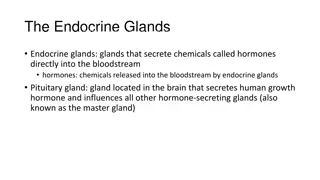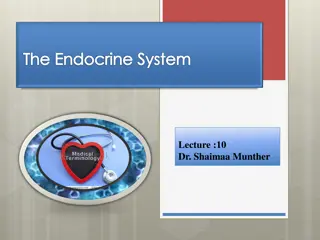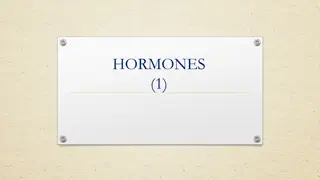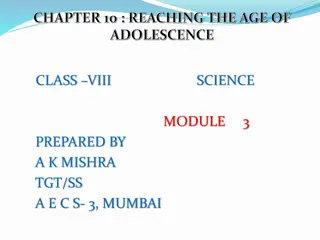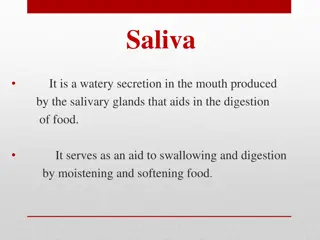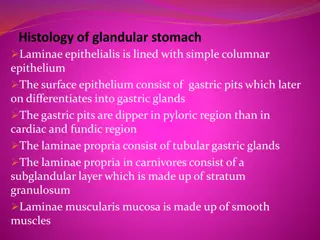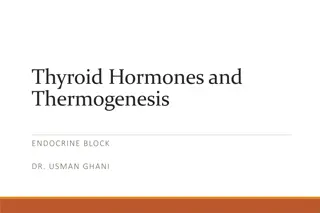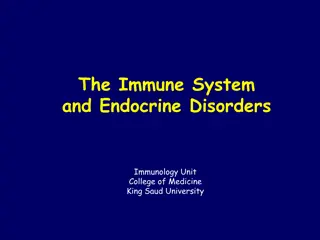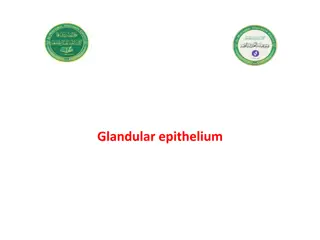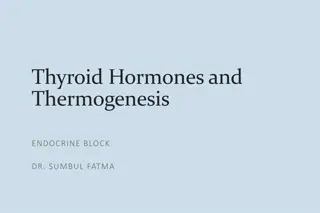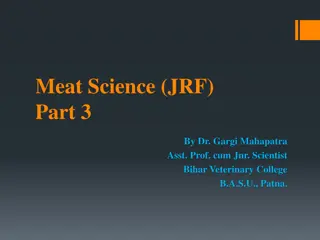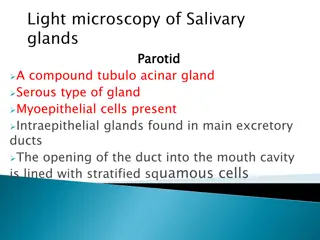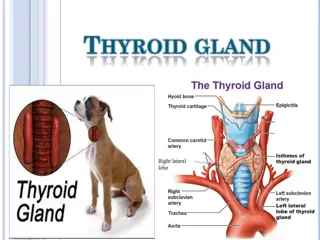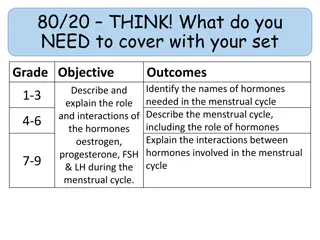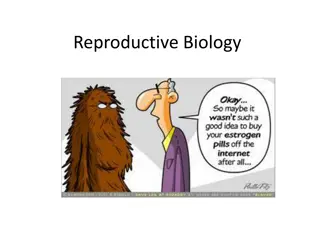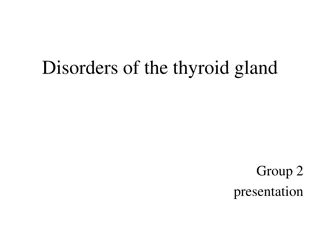Understanding the Endocrine System: Hormones, Glands, and Regulation
The endocrine system, comprising glands such as the pituitary, thyroid, pancreas, and more, produces hormones that regulate various bodily functions. These hormones target specific cells with receptors, influencing metabolism, growth, energy usage, and more. By understanding how hormones interact with target cells, we can appreciate the intricate role of the endocrine system in maintaining overall health and balance.
Download Presentation

Please find below an Image/Link to download the presentation.
The content on the website is provided AS IS for your information and personal use only. It may not be sold, licensed, or shared on other websites without obtaining consent from the author. Download presentation by click this link. If you encounter any issues during the download, it is possible that the publisher has removed the file from their server.
E N D
Presentation Transcript
AL-Mustansiriyah University College of science Biology Dept. Zoology 4thclass ENDOCRINOLOGY LAB. (1) NAME : 1
How have you changed over the past year? What has caused those changes? How do you think you will change in the next few years? 2
ENDOCRINE SYSTEM is the collection of glands that produce hormones that regulate metabolism, growth and development, tissue function, sexual function, reproduction, sleep, and mood, among other things. ENDOCRINE GLANDS are glands of the endocrine system that secrete their products, hormones, directly into the blood rather than through a duct. like the pituitary gland, pancreas, ovaries, testes, thyroid gland, parathyroid gland, hypothalamus and adrenal glands. 3
The Endocrine Glands are the organs of the Endocrine System. They produce and secrete (release) Hormones. They are located all over your body. 4
The Endocrine System regulates, coordinates and controls: Growth and development. Male and female development. How your body uses energy. Levels of salts and sugars in your blood. The amount (volume) of fluid in your body. Appetite. Many other body functions. 5
Gland Pituitary What it Regulates(in general) MasterGland that regulates all other Endocrine Glands, also releases growth hormone Metabolism, body heat, bone growth Use of Calcium and Phosphorous Links nervous system to endocrine system Thyroid Parathyroids Hypothalamus Adrenal Response in emergency or stressful situations, metabolism, blood pressure, salt balance Blood sugar Production of eggs; female characteristics Pancreas Ovaries Testes Production of sperm; male characteristics Thymus Parts of the immune system 6
Q. HOW DO YOU THINK THE ENDOCRINE GLANDS GET THEIR JOBS DONE ??? A. Hormone :is any member of a class of signaling molecules produced by glands in multicellular organisms that are transported by the circulatory system to target distant organs to regulate physiology and behavior. Target Cells Hormones only work on certain cells, called target cells. The target cells have special receptors that recognize the hormones and allow them to influence that cell. They fit like a lock and key. 7 These receptors recognize the hormones.
External stimuli Internal stimuli by way of nerves and other hormones from inside the body by way of nerves from the sensory organs in the nervous system ( outside of the body) 8
Endocrine system Nervous system Signal type Hormone 1. Action potential 2. Neurotransmitter( electrical ) Speed of transmission Slow ( about a minute) Fast ( 120 m/s) Target General ( Got a receptor) Specific Effect of Action Slow Fast 9
Negative feedback means that when enough hormone is in the body, the body stops producing the hormone until it is needed again. Increased glucose is detected by receptors that notify the brain. It sends a message to the pancreas to produce insulin. You eat. Glucose (sugar) in the blood increases. Pancreas stops making insulin. Insulin tells muscle and liver to take up glucose from the bloodstream and use it for energy or store it for later. Brain reduces appetite. Blood glucose level drops as it is removed by the cells. 10
Diabetes In the case shown in this picture, the body produces insulin but the target cells become resistant and unresponsive to it. Diabetes can also be caused by the body not producing enough insulin. The glucose does not enter the muscle and liver cells like it should and it builds up in the blood causing complications. 11
A few hormone systems are positive feedback systems: The pituitary gland sends a signal by way of the hormone oxytocin to the uterus causing contractions. The pressure of the fetus on the cervix sends a signal back to the brain which then stimulates the release of more oxytocin. This causes more contractions. The fetus pushes harder on the cervix. More oxytocin is released. The system continues until birth occurs. 12



